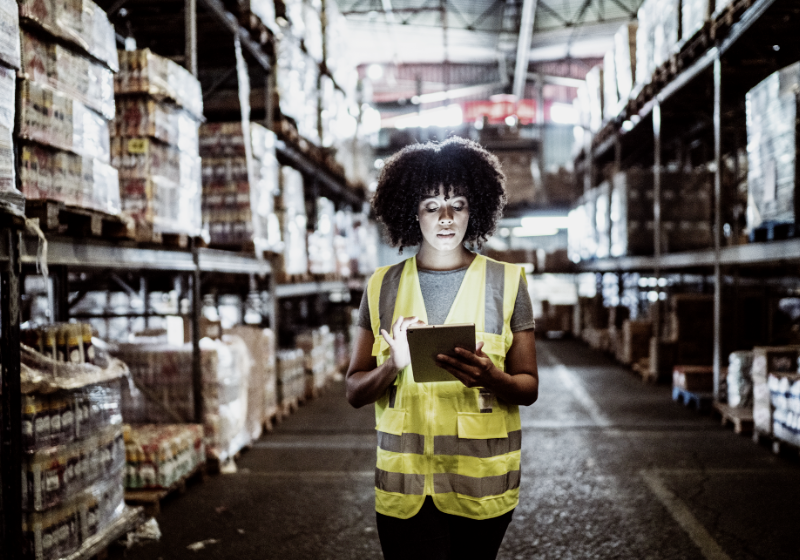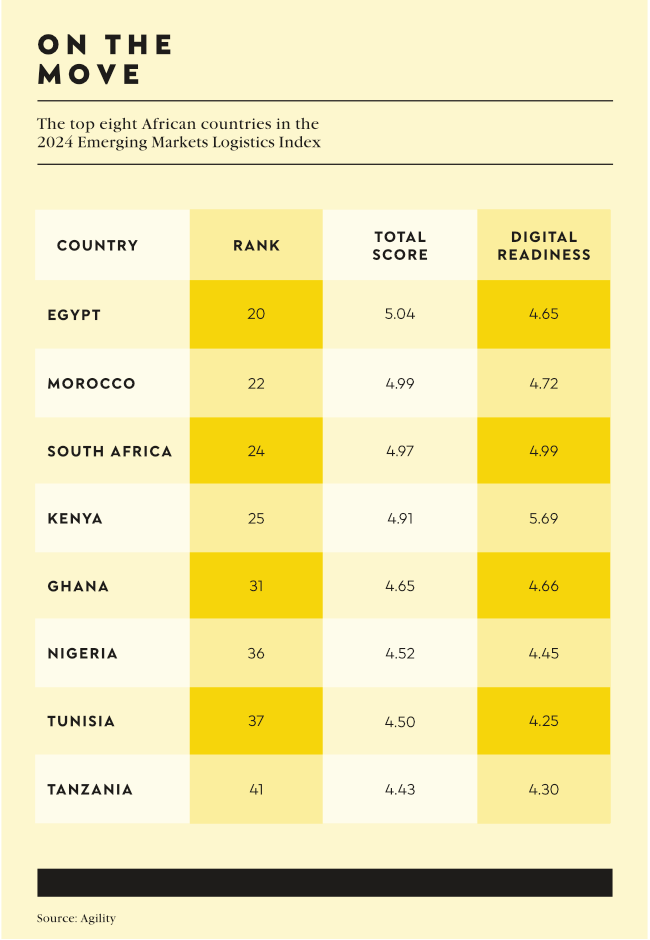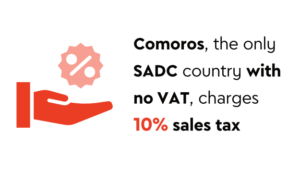Consumers are not particularly concerned how their products get from A to B, as long as they get there – in one piece and in the shortest amount of time possible. But with the explosion in e-commerce, the ins and outs of moving goods from one place to another have taken their place in the spotlight.
The US International Trade Administration predicts that Africa will have more than 500 million e-commerce users by 2025, with the value of the market almost doubling from US$1.14 billion in 2021 to US$2.35 billion in 2030. Global logistics giant DHL has named this the ‘era of logistics’. And the continent of Africa is poised to play a big role.
According to a recent survey of more than 800 industry executives, almost two-thirds of them are considering additional or first-time investments in Africa.
‘This is the most optimism we have seen about Africa in the 15 years of the index,’ says Tarek Sultan, vice-chairman of global logistics company Agility, in a media release.
The index to which he is referring is the company’s Emerging Markets Logistics Index, which ranks countries for overall competitiveness based on their logistics strengths, business climates and digital readiness. Four African countries make it into the top 25 – Egypt (20), Morocco (22), South Africa (24) and Kenya (25).
Several factors are behind the growing interest in African logistics – one being the growth of a youthful, tech-savvy population. ‘Africa’s population will double by 2050, when one in four people on the planet will be African,’ Sultan points out.
Another factor is the expected growth in intra-African trade, spurred by the launch three years ago of the African Continental Free Trade Area. ‘International businesses realise that the time is now for Africa – they need to invest, establish their brands and develop the next generation of African talent if they’re going to ride the coming wave of growth,’ says Sultan.
According to Lilian Nganda, head of customer communication (Middle East and Africa) for shipping giant Maersk, automation and robotics have emerged as a key trend in Africa’s supply chain and logistics industry, owing to the need for increased efficiency, cost-effectiveness and precision.
‘Automated warehouses, smart logistics platforms and digital supply chain ecosystems have become not just aspirations but integral components, setting the stage for a technology-driven logistics future in Africa,’ she writes in a recent online post.
Statista predicts that revenue in Africa’s robotics market – dominated by service robots – will top US$500 million in 2024, with a CAGR from 2024 to 2028 of 34.26%.
The advent of the mega warehouse – thanks to the e-commerce boom – has driven the need for robots such as automated guided vehicles (AGVs), which can traverse the required long, energy-flagging distances as a human operator would. Collaborative robots, or ‘cobots’, can undertake repetitive, tedious tasks, thus freeing up its human collaborators to focus on more complex jobs.
‘Essentially, AGVs help separate repetitive workflows from unique ones. And by removing those time-consuming activities that take away energy and resources, they add to greater efficiency and productivity,’ Fritz Barnard, national technical specialist at material handling equipment manufacturer CFAO Equipment SA, told Engineering News.
‘It must be stressed that the addition of AGVs will not make skilled workers redundant. In many instances AGVs perform tasks that humans are not well equipped to handle. For example, an AGV can work in extreme temperatures and is well suited for excessively repetitive tasks, like retrieving empty pallets in continuous 24/7 operations, disregarding breaks and skipping any kind of absence.’
Proving the point that logistics has been brought into the foreground more, online retailer Takealot employs a fleet of AGVs at its collection point in Richmond Park, Cape Town, not only in the warehouse, but also to deliver packages directly to customers.
‘With an average collection time of just three minutes, these “little robot helpers” guarantee safe transport of packages from behind the scene into shoppers’ hands,’ according to Takealot.
Meanwhile, in Johannesburg, logistics and courier company Buffalo Couriers has launched one of the country’s first all-robotic package sorting systems. It comprises 90 Mini Yellow autonomous mobile robots (AMRs) manufactured by Chinese start-up Libiao Robotics and installed by local robotics dealer Black Rhino.
The AMRs traverse Buffalo’s 35 000 m2 multi-client facility in Johannesburg, delivering parcels to different destination chutes. The parcel’s barcode is scanned at the induction point, directing the AMR to take the shortest route to the specific destination chute, from where the parcel is couriered to the customer. The company says its workforce productivity has shot up from 25% to 95%.
At DHL Freight Forwarding’s trans-shipment hub in Johannesburg, robots are employed to do all the heavy lifting, all to the advantage of its human employees and their health. In addition, wearable eye glasses help employees automatically scan parcel barcodes by merely looking at them.
‘We have a very big focus on digital transformation,’ says Clement Blanc, CEO of DHL Global Forwarding for South Africa and sub-Saharan Africa. ‘In our logistics processes, one of the key things is information – so the backbone of our business is our digital ERP [enterprise resource planning] platform that keeps information for all our operations. We have dimensional scanners that scan and detect the measurement of the parcel, which is then automatically uploaded into the system.

‘IoT [internet of things] is very important; we have RFID [radio frequency identification] devices that we attach to the parcels that help us track the goods at any moment to give customers real-time visibility. We also have temperature sensors attached to the parcels, which help keep the cold chain constant during the transportation of pharmaceuticals. These devices automatically send the information to our system,’ says Blanc.
It’s not only in Africa’s warehouse that innovation is happening. ‘The rise of e-commerce and the desire for quick and dependable deliveries have resulted in innovations in last-mile logistics that overcome obstacles such as the lack of reliable address systems in many African countries, safety and security and poor transportation infrastructure,’ says Maersk’s Nganda.
During the COVID pandemic, drones were used (and still are) to great effect to fly vaccines to out-of-the-way places in Africa. However, their usefulness outside the healthcare sector is constrained by their payload capacity (typically around about 4 kg).
One South African start-up, meanwhile, is ‘supersizing’ the concept of the drone – by using an 18m-long blimp. Cloudline’s fully autonomous, solar- and battery-operated airship has a 400 km range, and while its payload capacity is currently 40 kg, the company has plans to increase this to 100 kg.
The Stellenbosch-based start-up is no fly-by-night-operation. Formed four years ago and attracting US$6 million in seed funding from the likes of Schmidt Futures, the company is the brainchild of local entrepreneur Spencer Horne. ‘What we’ve been working on is really a first-of-a-kind product,’ he says.
While Cloudline is still investigating commercial avenues, it has worked with Unicef in Namibia to deliver medical supplies and diagnostics, and with the UN’s World Food Programme in Mozambique and South Africa.


















